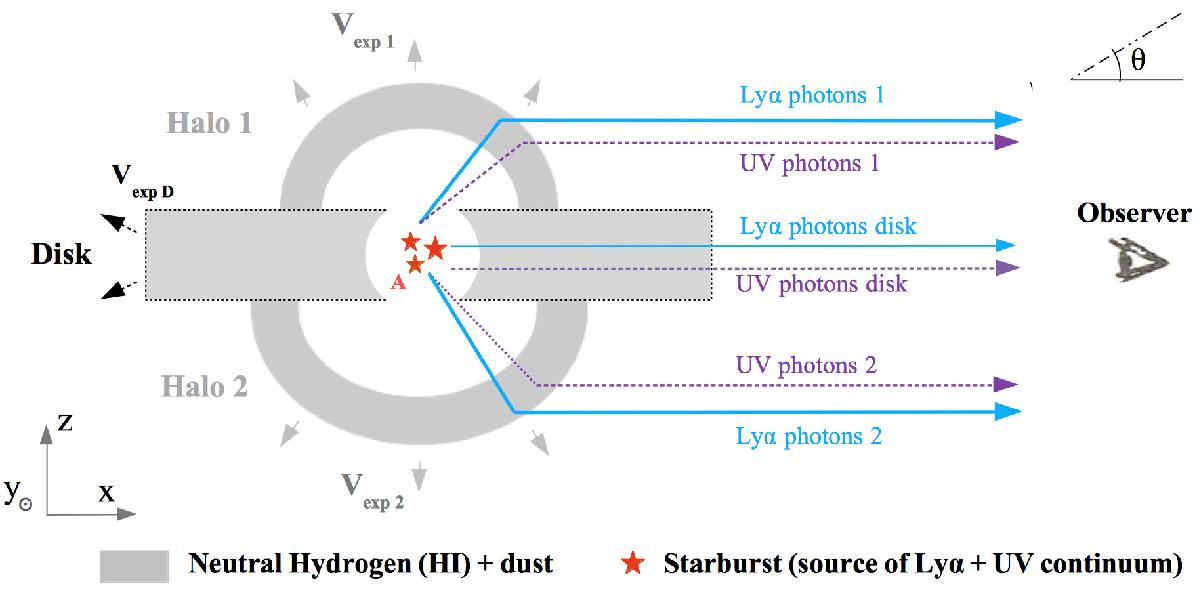Fig. 9

Illustration of the 3D geometry used to fit the Lyα line profile of Mrk 1486 and built in a Cartesian grid (x, y, z). It is composed of three different regions that represent the regions seen through the COS aperture of Mrk 1486. First of all, we consider a medium named “disk” that represents the disk of the galaxy. This medium is located in the center of the 3D geometry and corresponds to the central part of a radially homogeneously expanding shell of HI and dust. Then, we add two other media above and below the galaxy disk (named halo 1 and halo 2). These two half-shells model the outflowing halos of cool material observed above and below the disk of Mrk 1486. We consider a point-like central source of Lyα and (non-ionizing) UV continuum photons at the center of the disk. Finally, the dashed and the thick lines represent the trajectories of UV continuum and Lyα photons that we take into account to fit the Lyα line of Mrk 1486 (![]() ). While Lyα photons are very likely to escape toward the observer after scattering on HI atoms, UV continuum photons do the same either by passing through the galaxy disk or by scattering on dust grains in the outflowing halos.
). While Lyα photons are very likely to escape toward the observer after scattering on HI atoms, UV continuum photons do the same either by passing through the galaxy disk or by scattering on dust grains in the outflowing halos.
Current usage metrics show cumulative count of Article Views (full-text article views including HTML views, PDF and ePub downloads, according to the available data) and Abstracts Views on Vision4Press platform.
Data correspond to usage on the plateform after 2015. The current usage metrics is available 48-96 hours after online publication and is updated daily on week days.
Initial download of the metrics may take a while.


